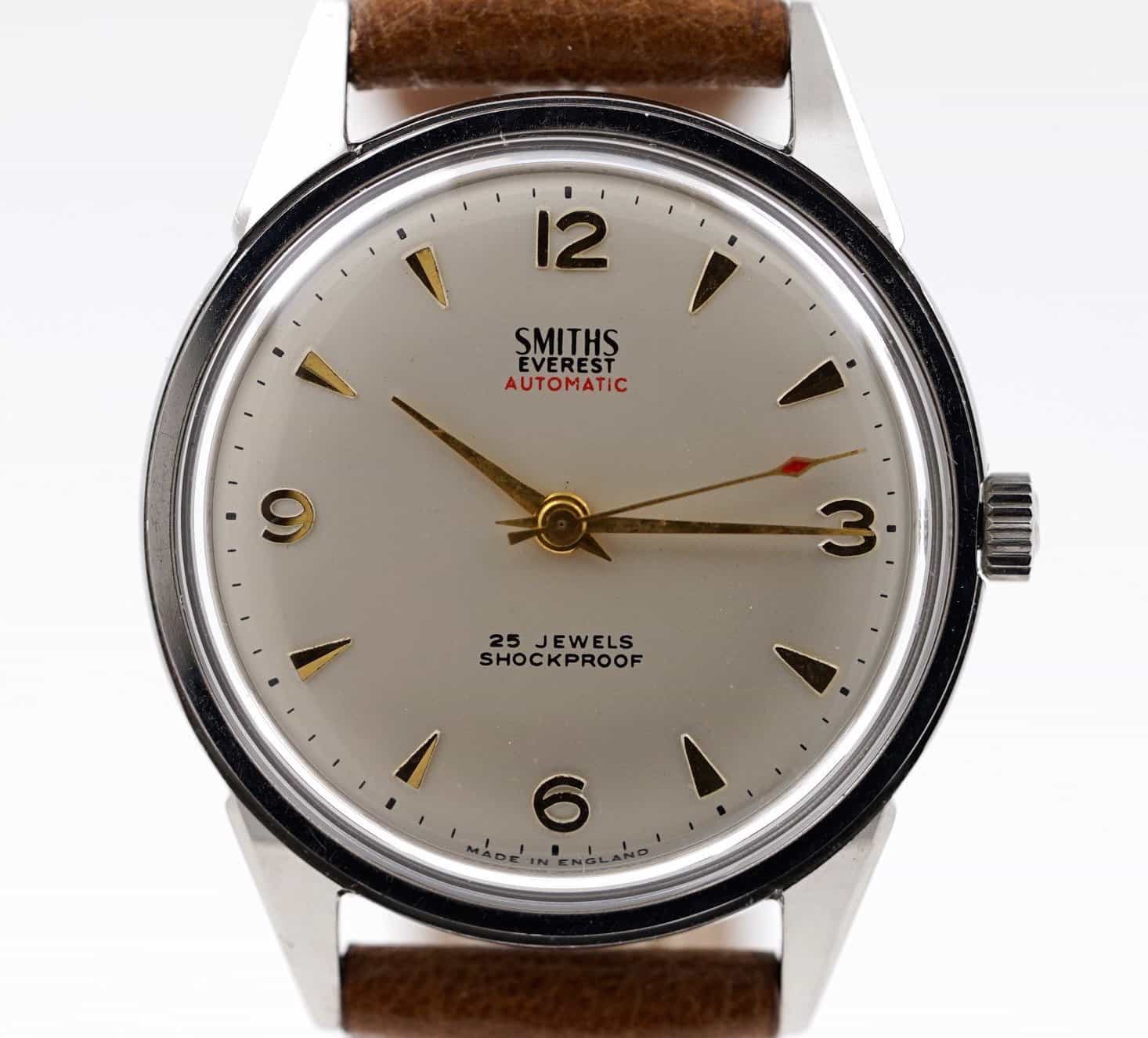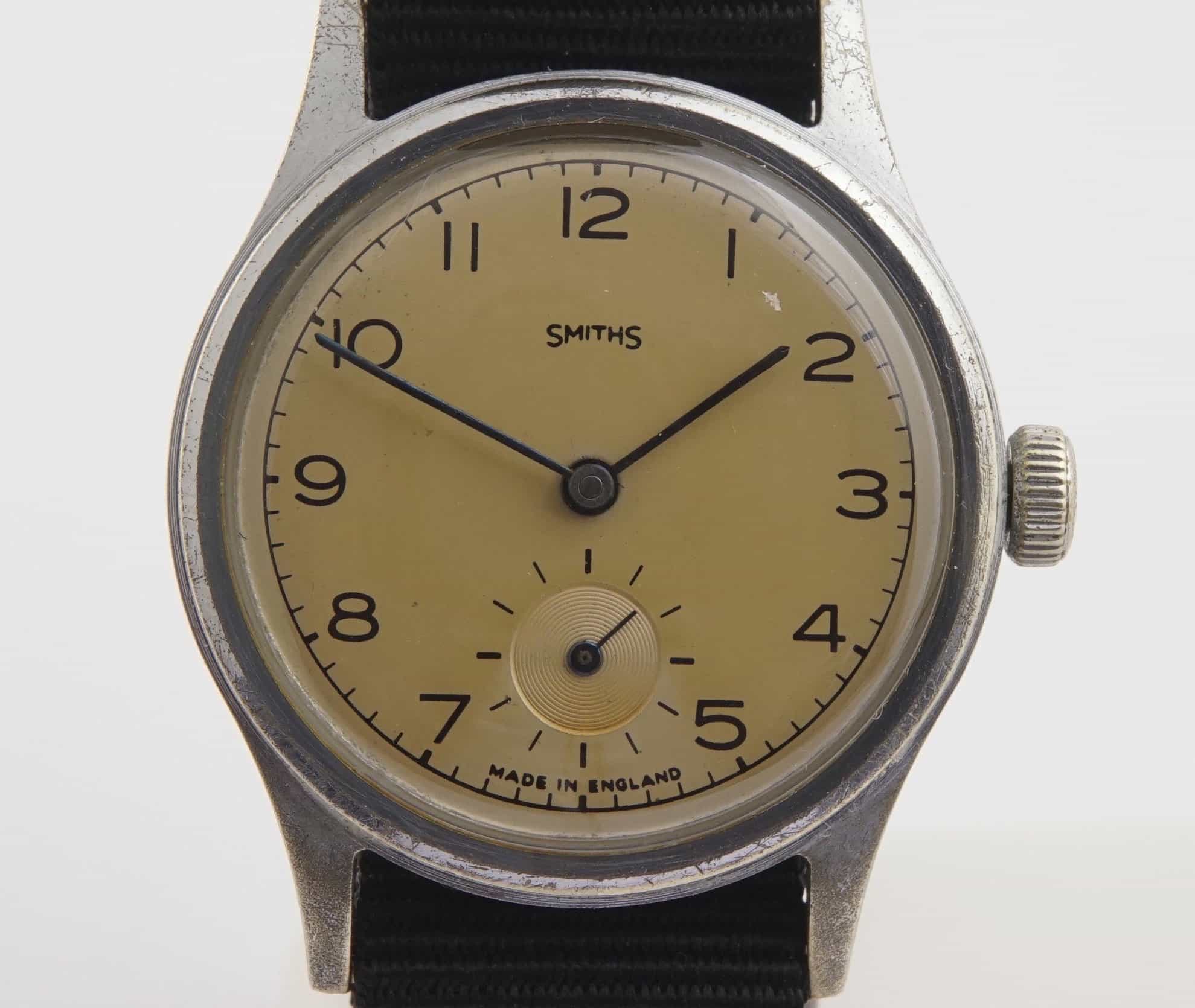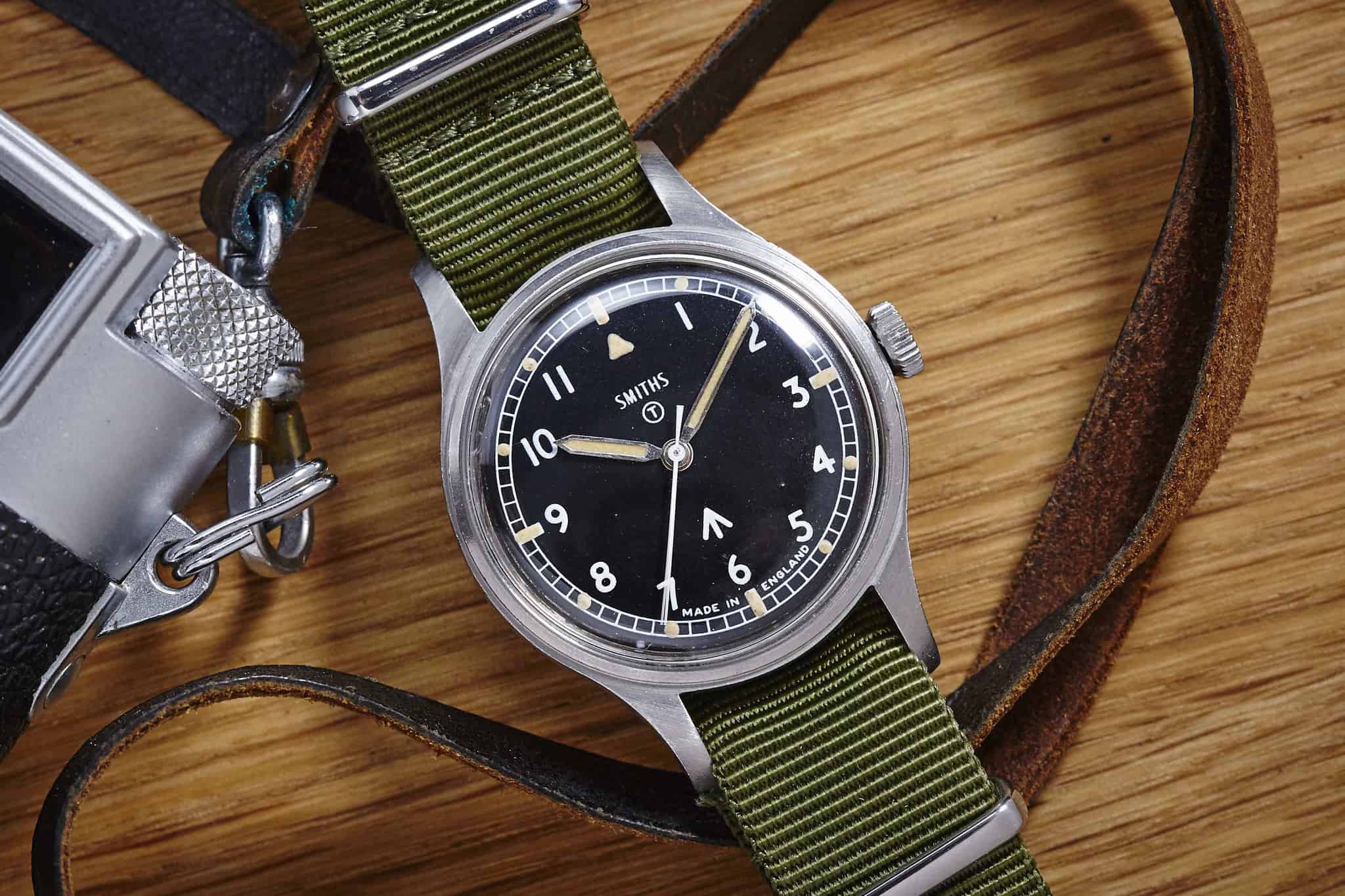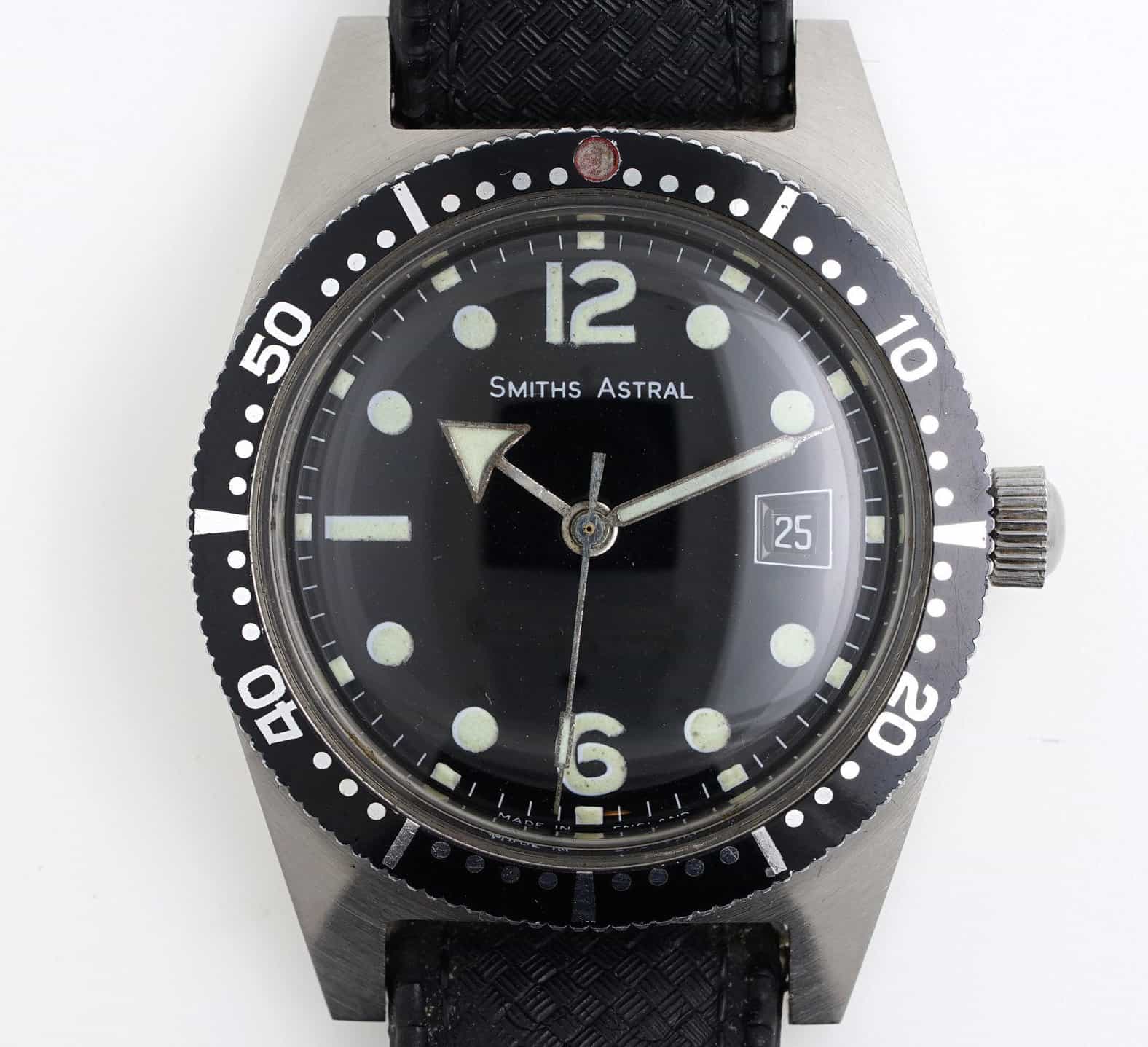It’s 1953. Queen Elizabeth II, Britain’s longest-reigning monarch, is about to be crowned (she’s already launched the new royal yacht Britannia earlier in the year). Sugar and sweet rationing comes to a sticky-fingered end. And Edmund Hillary is about to conquer Everest along with his Smiths De Luxe wristwatch.
There’s enough controversy about which watch Hillary actually wore (rather than carried) to the summit to keep watch historians and the rumor mills busy for years. But there’s little doubt that Hillary took a Smiths with him on his defining expedition. After all, the watch featured in several ad campaigns after he’d made his successful ascent.
Smiths was a giant of British watch and instrument manufacture. They’d been watchmakers to the Admiralty, made speedometers and gauges for cars, aircraft (even the de Havilland Comet) and motorcycles. For a while, in the early twentieth century, they even made carburetors. They had a watch workshop in Cheltenham, Gloucestershire producing high-quality watches. And in the West Oxfordshire town of Witney, Smiths was a significant-enough local employer to build its own housing estate to provide accommodation for its workers, just a few yards from what was the Witney Aerodrome. Clearly more interested in engineering than being poetic, they christened it “Smiths Estate,” a name it still bears.










 Featured Videos
Featured Videos














